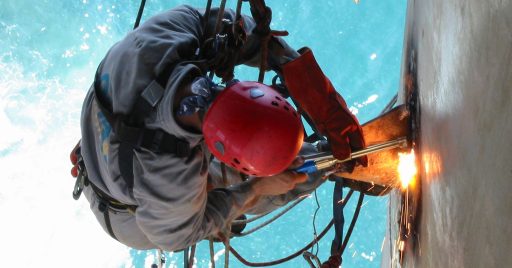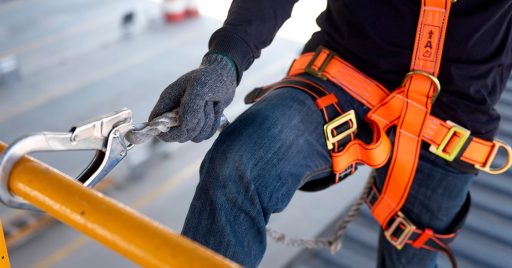PPE for working at height can mitigate fatalities and injuries, and it seems more vital when you know that falls remain the first fatal cause in construction sites. Reports show that only in the U.K, over the last five years, working at height caused 45% of deadly accidents, with 97 deaths. Besides the fatalities, working at height is also attributed to 33% of non-fatal injuries. Therefore every safety measure could be vital during working at height.
One of the most accessible related-solution to reduce occupational hazards is wearing suitable PPE for working at height. Wearing appropriate safety gear can mitigate risks. It can also reduce injuries whenever an accident happens and even be vital and saves lives. Then, employers must take wearing PPE seriously, and besides providing a suitable one, they must supervise that every worker wears the mandatory provided PPE correctly since workers sometimes decline to wear safety gear.
As a result, if we agreed when a person works at height, wearing proper PPE is necessary, then the question will be, what PPE for working at height is essential? In the following, we mention some essential safety gear for working at height, including helmet, eye protection, footwear, protective gloves, and harness.
Table of content
1- Helmet
Helmets are the most common PPE and the first safety gear, which of a person think. Working at height is not exceptional, and workers must wear proper helmets to protect themselves from falling objects and probable head damage.
Proper protective or hard hats should be designed to resist penetration by objects, absorb the shock of a blow, be water-resistant and slow-burning. Employers must provide a suitable helmet for every worker, a hard hat that is fit and comfortable enough that the person is satisfied to use them. A helmet is the first essential PPE for working at height that must be considered.
However, workers sometimes prefer not to wear helmets for various reasons despite their mandatory. Therefore employers must monitor to ensure wearing PPE besides providing proper one.

2- Eye protection
Wearing eye protection, especially for welders, is mandatory. It protects workers from radiation, flying particles, debris, hot slag, sparks, intense light, irritation, and chemical burns. Therefore, eye protection must be among the essential PPE for working at height.
Since most workers who must work at height are welders, wearing eye protection must be required, and employers must provide proper eye protection.
On the other hand, in construction sites, there are always falling objects risk. Therefore it is better for workers who work at height to wear eye protection too.
3- Footwear
Using proper footwear is essential for every worker on a construction site, but it is more critical for the one who works at height since wearing unsuitable shoes can cause slips and leads to a fall. Falls, slips, and trips cause injuries, damaging industries more than 17 billion dollars in 2019. They are among seven common workplace safety hazards and can cause fatal accidents, especially during working at height.
On a construction site, everyone must wear proper footwear since different elevations and debris are on the ground. A proper, sturdy shoe with ankle protection will help save a worker from a twisted ankle. In addition to protective features, comfortability is also so important. A worker who works all day on his feet requires a comfortable boot. Therefore, footwear is also among PPE for working at height.
4- Harnesses/Karabiners
Besides all mentioned PPE, working at height often requires other essential PPE like harnesses with karabiners. Most safety laws required employers to ensure that workers use fall protection if they could fall 3 meters.

Harnesses ensure that workers can safely do their job if they need to repair telecommunication equipment, clean windows, or weld a steel beam junction. Harnesses will hold workers in place, get them safely up and down, and prevent falls. Using a harness and considering appropriate anchor points are a part of what is known as a “fall arrest system.”
Employers and safety managers must determine workplace hazards and implement an occupational health and safety management system. This system must consider both operations’ risks and their solutions.
The “Fall arrest system” can be a solution to avoid accidents related to working at height. Therefore it would be better if employers consider such a system to mitigate risks and protect workers.
Since working at height is one of the deadliest jobs, employers must consider efficient supervision besides providing proper safety gear, especially in the construction industry. Surveillance also helps to persuade workers to wear PPE. VEUNEX can monitor wearing PPE and warn the safety crew if any worker doesn’t wear essential PPE.